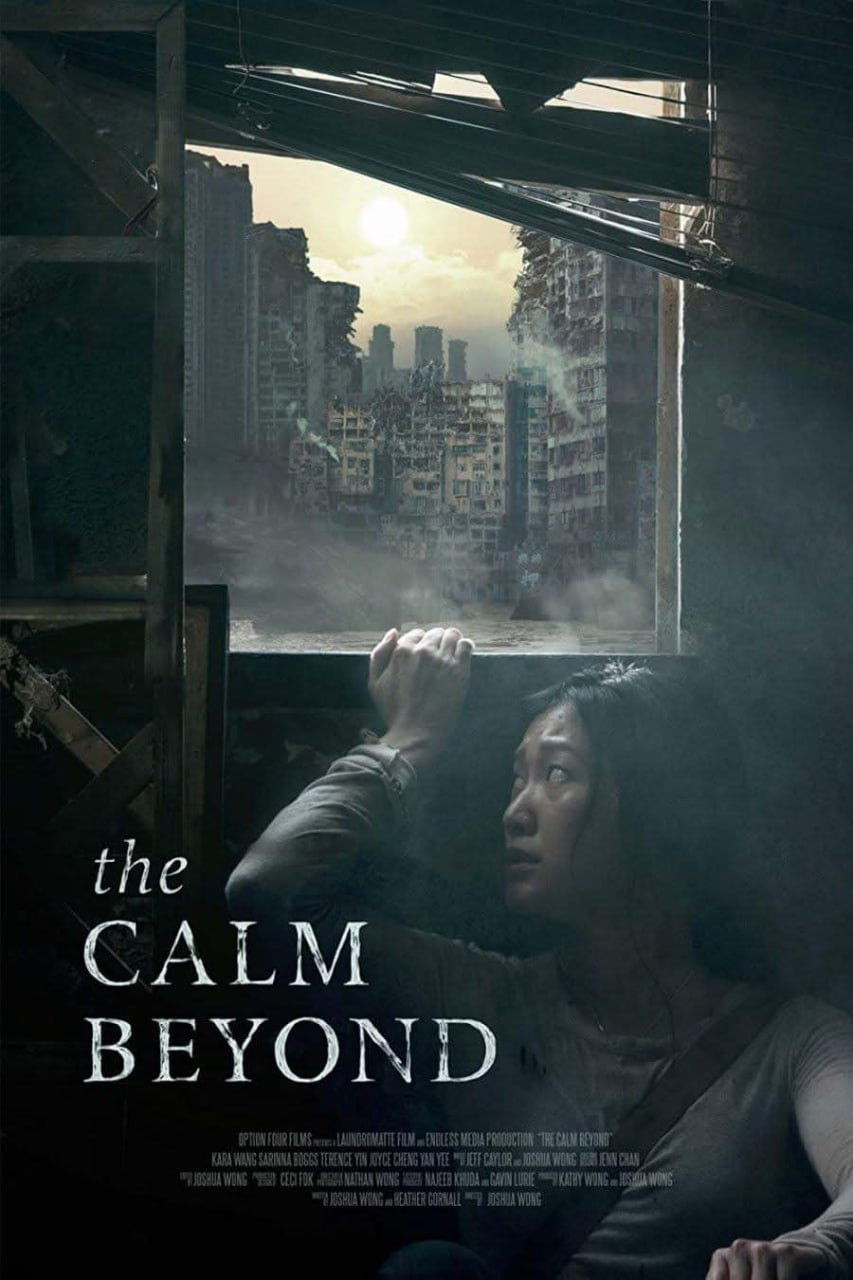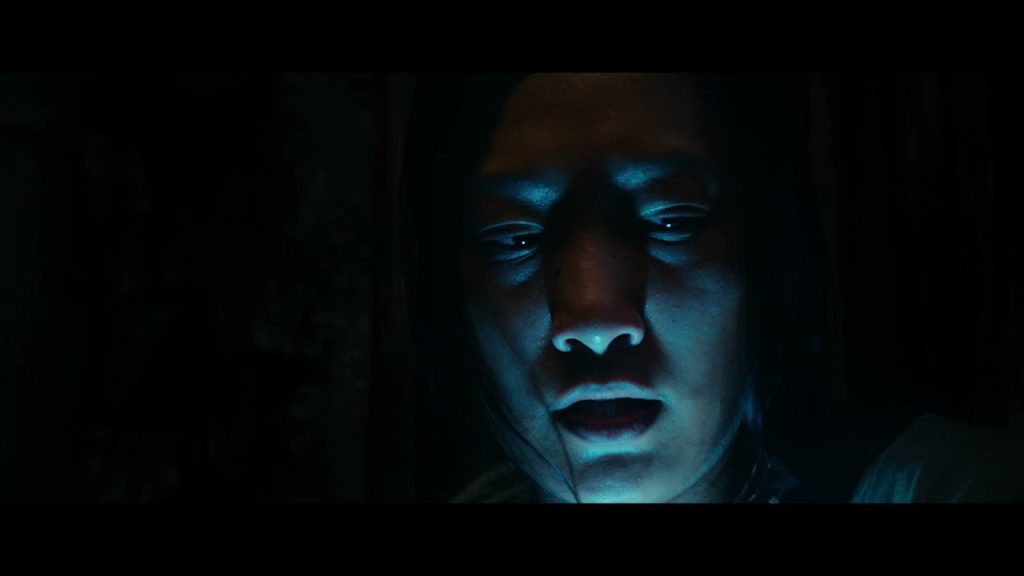The Calm Beyond (2020)

The Calm Beyond (2020): A Quiet, Flawed Gem in a Drowned World
The Calm Beyond (2020), directed by Joshua Wong in his feature debut, is a Hong Kong-set post-apocalyptic thriller that premiered at the Adelaide Film Festival on October 16, 2020, before a wider digital release in 2022 via Sony Pictures. With a modest budget and a 95-minute runtime, it stars Kara Wang as a solitary survivor navigating a tsunami-ravaged city, joined by Sarinna Boggs, Terence Yin, and Joyce Cheng. Blending sci-fi, drama, and action, it follows a woman’s fragile existence upended by a child’s arrival and lurking threats. Shot amid Wong’s battle with cancer—he passed away on Christmas Day 2020—it’s a testament to resilience, both onscreen and off. While its haunting visuals and quiet tension shine, The Calm Beyond stumbles with narrative gaps, uneven pacing, and a lack of fresh stakes, making it a compelling yet imperfect sleeper. This review dives into its depths—story, craft, cast, and legacy—to weigh its worth.
Plot Summary: Survival in a Waterlogged Wasteland
The Calm Beyond opens with a stark crawl: Earth’s five mass extinctions have led to a sixth—a “world-destroying typhoon” that floods Hong Kong, leaving skyscrapers half-submerged. Asha (Kara Wang), a young woman, survives in a decaying high-rise, scavenging ramen and rainwater, hiding from pirates who roam the waters in boats armed with guns. Her routine—silent, methodical—hints at years of isolation, her only company the ghosts of her past.
The story shifts when Hei Hei (Sarinna Boggs), a little girl, floats into Asha’s life on a makeshift raft, clutching a doll. Reluctant at first, Asha takes her in, triggered by flashbacks of her half-sister, lost to the flood. These glimpses—family dinners, a typhoon’s chaos—reveal Asha’s guilt and grief. The duo’s bond grows, fragile but real, as they share meals and makeshift games.

Tension spikes when pirates, led by a nameless brute (Terence Yin), spot their hideout. A chase ensues—Asha wielding a bat, Hei Hei scrambling—culminating in a brutal showdown. Asha kills the leader, but not before he wounds her. The climax pivots as Hei Hei, in a twist, drifts away on a boat, leaving Asha alone again, staring at the horizon. An ambiguous fade-out suggests hope—or despair—leaving her fate open. It’s a lean tale of survival, loss, and fleeting connection, told with minimal dialogue and maximum mood.
Production: A Labor of Love on a Tight Rope
Made for an estimated low budget—likely under $5 million, though unconfirmed—The Calm Beyond is a marvel of resourcefulness. Wong, a short-film veteran, shot in Hong Kong, using real locations like abandoned buildings and water tanks, enhanced by CG to craft a drowned cityscape. Cinematographer Nathan Wong (no relation) blends murky greens and yellows with neon flashbacks, creating a striking contrast—bleak present, vivid past. Practical effects—floating debris, soggy interiors—sell the ruin, while modest VFX stitch the world together.
Wong co-wrote with Heather Gornall, aiming for a lean script that prioritizes atmosphere over exposition. The typhoon’s cause is vague—global warming? Cosmic fluke?—a choice that sidesteps science for mood. Nicolas Errèra’s score, with its soft piano and pulsing beats, drives the tension, though it overplays in quiet scenes. Producers Kathy Wong and Joshua pushed the film through despite his cancer diagnosis, a feat honored at its Adelaide premiere.
Post-production wrapped just before Wong’s death, with Sony snagging worldwide rights in 2021. Released digitally in 2022, it skipped theaters—a Covid-era casualty—but found a niche on platforms like Amazon and Fandango. It’s a scrappy debut, its limits clear in sparse effects and a rushed third act, yet its vision punches above its weight.

Performances: Wang Carries, Others Support
Kara Wang is the film’s spine as Asha. Her physicality—hauling buckets, swinging a bat—grounds the survivalist grit, while her silent stares convey a woman hollowed by loss. She shines in action, felling pirates with feral precision, but excels in stillness—feeding Hei Hei, eyes wet with memory. Wang’s debut lead role (after TV bits in Good Trouble) proves her a talent to watch, though the script gives her little dialogue to flex.
Sarinna Boggs, eight during filming, brings Hei Hei to life with raw innocence. Her wide-eyed curiosity—playing with a doll, mimicking Asha—cuts through the gloom, a natural child performance that avoids cloying. Their chemistry clicks in small beats: sharing noodles, a rare smile. Boggs’ first feature role impresses, her departure a gut punch.
Terence Yin’s pirate leader is a stock villain—gruff, menacing—but effective in his brief menace. Joyce Cheng, as a flashback mom, adds warmth to Asha’s past, though her Cantonese lines lack subtitles in some cuts, a flaw for non-speakers. The cast is tiny, with extras as fleeting threats. Wang carries the load, Boggs lifts the heart—others just fill the frame.
Themes: Grief, Hope, and Quiet Resilience
Grief anchors The Calm Beyond. Asha’s flashbacks—her sister swept away—mirror her bond with Hei Hei, a chance at redemption she can’t fully grasp. The film’s title nods to hope—a calm after the storm—but it’s elusive, shadowed by loss. Resilience shines: Asha’s survival hacks (rain traps, scavenged food) show human grit in collapse.
Family ties thread through—past and present collide as Asha mothers Hei Hei, echoing her sister’s ghost. A faint eco-warning lurks—the typhoon as nature’s wrath—but it’s backdrop, not sermon. Silence is a theme itself: minimal talk forces focus on action and eyes, a Quiet Place-lite vibe. It’s introspective horror, less about monsters than inner scars, though it skirts deeper dives.
Strengths: Mood, Visuals, and Wang’s Grit
The mood is the star—claustrophobic, eerie, alive. The drowned Hong Kong, with its tilted towers and lapping waves, feels real, a Waterworld echo with less bombast. Wong’s direction crafts tension from stillness: a creaking floor, a pirate’s shadow. The chase—pirates storming the hideout—is a tight, brutal burst, Wang’s bat-swinging fury a standout.
Visuals stun on a dime: neon-lit memories clash with the grey-green now, a poetic split. Wang’s performance holds it together—her quiet strength and sudden violence mesh seamlessly. Boggs’ innocence adds a flicker of light, making their bond the film’s pulse. At 95 minutes, it’s lean, wasting no frame on fluff—a rare post-apocalypse tale that trusts silence over noise.

Weaknesses: Gaps, Logic, and a Soft End
The plot’s thinness bites. Why’s Hong Kong still flooded years later? Where’s the rescue? Pirates hoarding boats and guns feel cliched—Mad Max on water, but shallow. The typhoon’s scale—global or local?—is murky, undercutting stakes. Hei Hei’s arrival is convenient, her exit abrupt, leaving Asha’s arc dangling.
Logic falters: Asha’s endless ramen stash defies sense—five years of noodles? The pirates’ motive—hunt survivors?—lacks meat. Pacing sags mid-film: too long in the hideout, too rushed in the fight. The ending—Hei Hei drifting off—aims for ambiguity but lands flat, no closure or punch. It’s a mood piece that forgets to scare or resolve, leaning on vibe over substance.
Reception: A Sleeper with Split Views
Adelaide Film Festival 2020 cheered Wong’s debut—his cancer battle added poignancy, earning a standing ovation. Digital release in 2022 drew mixed buzz. Asian Movie Pulse praised its “entertaining spectacle” and action, The Reel Bits lauded its “gripping climax” and world-building, scoring it 3.5/5. Bloody Disgusting liked its quiet take, while FilmCarnage found it “sentimental, not tense,” docking its lack of edge.
IMDb sits at 5.5/10—fans call it “a gem” for its mood, detractors slam “boring” stretches and “nonsense” logic. Letterboxd averages 3/5: “lonely and lovely” vs. “slow and cliched.” Amazon’s 4/5 reflects casual love—“great acting, cool setting”—but gripes about subtitles and pace persist. It’s a cult contender, not a mainstream hit, streaming views modest but steady.
Cultural Impact: A Niche Echo
The Calm Beyond joins 2020s post-apocalypse waves—The Last of Us, A Quiet Place—but lacks their reach. Its Hong Kong twist and female lead nod to Asian cinema’s rise, though English dialogue (odd for locals) dilutes authenticity. Wong’s death adds a bittersweet legacy—his passion shines through, a quiet mark in a loud genre. It’s a Max staple, not a movement, cherished by fans of slow-burn survival over blockbuster flash.
Final Verdict: A Haunting, Half-Finished Tale
The Calm Beyond is a flawed beauty. Wang’s grit and the drowned city mesmerize, Wong’s vision—forged in pain—impresses. Silence and visuals carry it far, Boggs’ spark lifts it higher. But gaps in logic, a soft end, and thin stakes keep it from greatness. It’s not The Road’s bleak poetry or Waterworld’s wild swing—just a quiet, scrappy survivor’s cry. Stream it for its mood and heart, not its answers.
Score: 6.5/10. A poignant debut that whispers more than it roars.